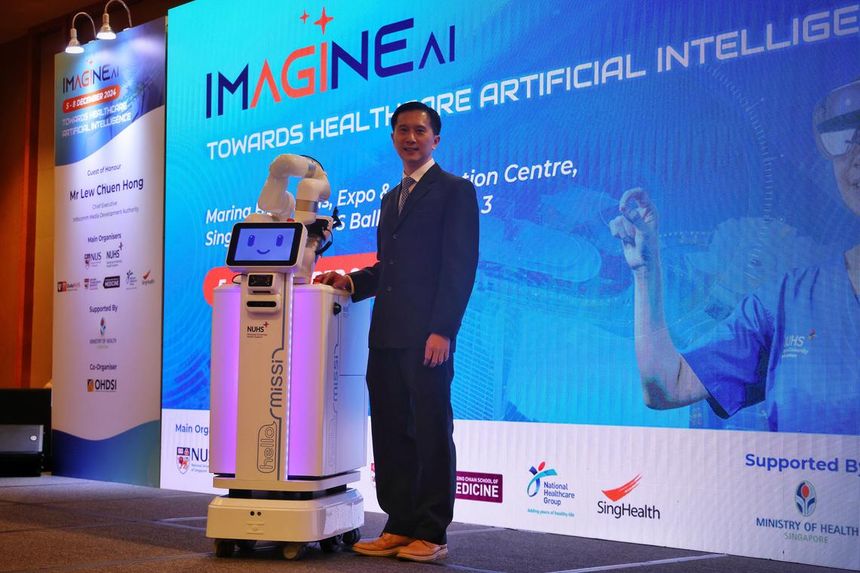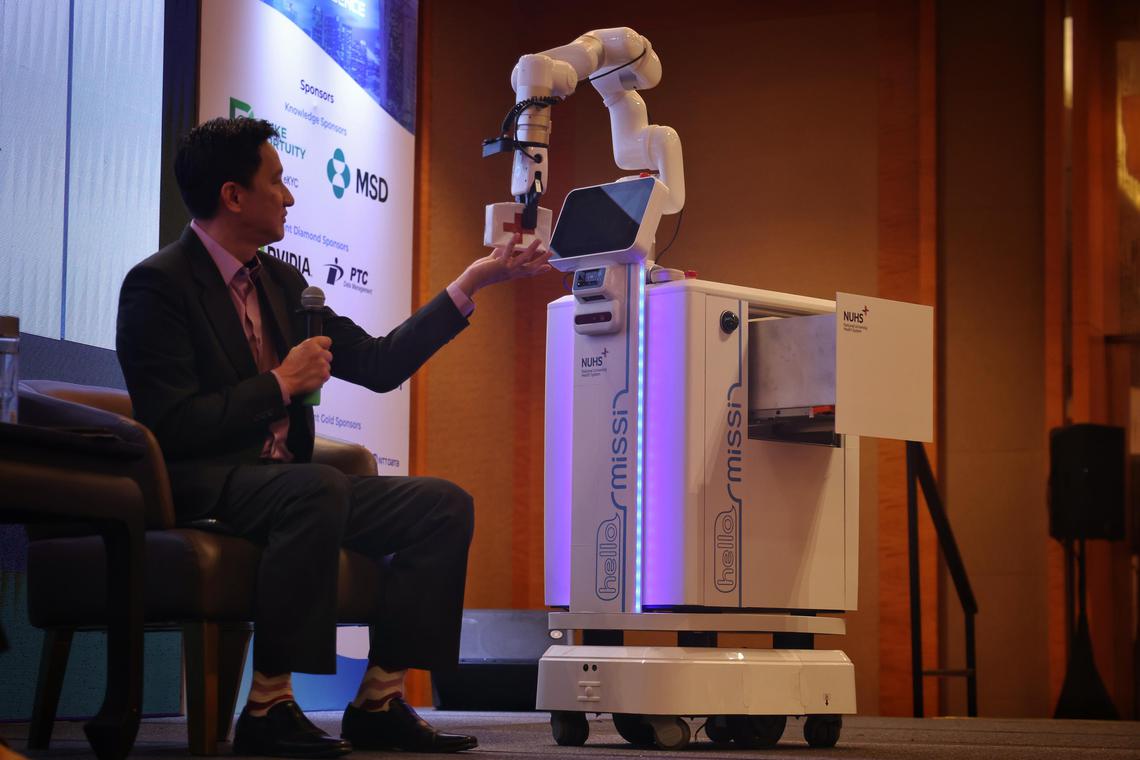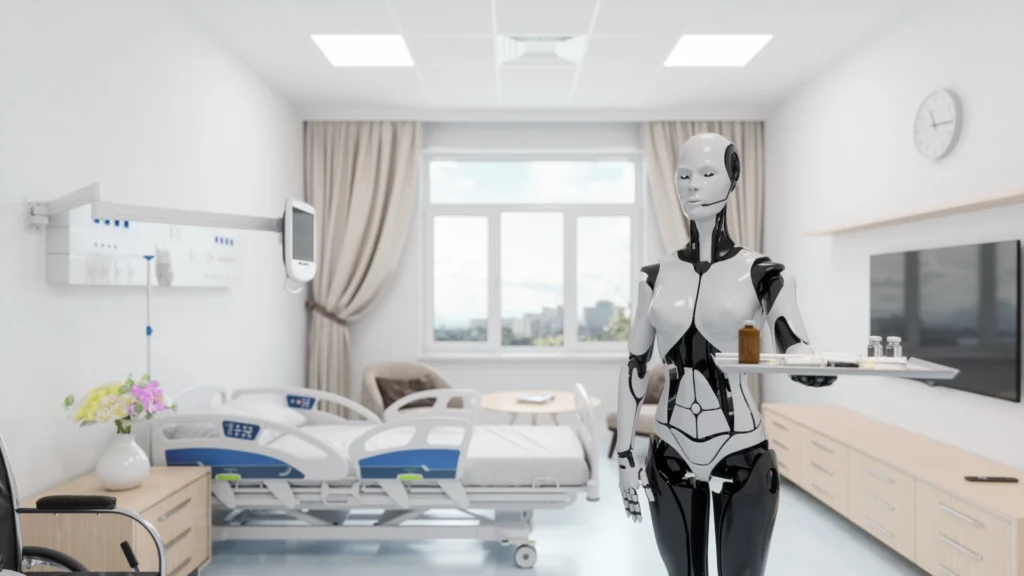Robot Nurses used to be a thing only seen in the movies. Come 2025, the National University Hospital (NUH) will welcome its newest team members – robot nurses that can monitor patients and give out medicine.
As a Singaporean who has spent countless hours visiting loved ones in hospitals, I’ve seen our dedicated nurses rushing from ward to ward, juggling multiple tasks while maintaining their warm smiles. Now, imagine these hardworking healthcare heroes getting extra help from high-tech assistants that never need a break.
But before you picture sci-fi robots taking over our hospitals, let’s be clear – these automated assistants aren’t here to replace our human nurses. Instead they are designed to handle the routine tasks, giving the healthcare professionals more time to focus on more complex tasks that no machine can replicate. At least not yet.
The NUH Robot Nurses Pilot Program

The current timeline from NUH is to introduce these robot nurses in 2025. This will give them plenty of time to fine-tune the technology and get the staff trained. Introducing fancy new robot nurses is one thing. But its another thing to ensure a smooth integration into our healthcare system.
Integration with Existing Systems
The current timeline from NUH is to introduce these robot nurses in 2025. This will give them plenty of time to fine-tune the technology and get the staff trained. Introducing fancy new robot nurses is one thing. But its another thing to ensure a smooth integration into our healthcare system.
The robot nurses aren’t meant to work in isolation. The idea is to have these robots handle routine tasks, freeing up our healthcare professionals to focus on more complex aspects of patient care that require human judgment and that personal touch.
As Singaporeans, we’re always keen on efficiency, and this seems like a smart way to address our healthcare challenges.
Of course, there might be some initial hesitation – after all, the idea of robots in our hospital wards is quite new. But once we see how these robot nurses can support our hardworking healthcare staff and potentially improve patient care, we’ll wonder how we ever managed without them.
What does a Robot Nurse do?

While they might not be able to give that reassuring pat on the shoulder like our human nurses, these robotic assistants are actually quite capable in their own way.
Core Functions
Patient Monitoring
These robot nurses will be equipped with advanced systems to keep track of patients’ vital signs and overall condition. Think of them as vigilant guardians that can spot any concerning changes in a patient’s health status right away, allowing our human healthcare team to respond quickly when needed.
Medication Management
One of the most impressive features is their ability to handle medication duties. These robots will be programmed to distribute the right medicine to the right patient at the right time. This should reduce the margin of human error in medication dispensing, leading to increased patient safety.
Task Automation
By taking over these routine but essential tasks, robot nurses will free up our human nurses to spend more time on complex care duties that require that special human touch – like providing emotional support to patients or making critical care decisions that need human judgment.
While some might be concerned about robots in our hospitals, I see it as a smart way to support our hardworking healthcare staff. After all, in our typical Singaporean pragmatic fashion, if technology can help make our healthcare system more efficient while maintaining high standards of care, why not embrace it?
What are the Benefits of Robot Nurses?
Firstly, our human nurses will finally get the support they need. By having MiSSi robots handle routine tasks like vital sign monitoring and medication delivery, our nurses can focus on what they do best – providing that personal touch and complex care that only humans can deliver
24/7 Monitoring
These robots never get tired! They can continuously monitor patients’ conditions and quickly alert staff if something seems off. They’re even smart enough to detect when patients might be at risk of falling, adding an extra layer of safety to our wards.
Multilingual Communication
The nurse robots can communicate in multiple languages – English, Mandarin, Tamil, and even Korean and local dialects. This will really help bridge communication gaps with our diverse patient population. I for one would be curious to see how they explain complicated medical terms in hokkien to my grandmother.
Streamlined Workflows
The robots will handle various tasks like:
- Medication delivery between pharmacies
- Patient monitoring and vital signs recording
- Guiding patients around the premises
- Facilitating teleconsultations
Resource Optimization
Previous trials at other hospitals have shown that one robot can do the work of about two staff members over the course of a year. This is particularly significant given our healthcare manpower challenges.
What are the Challenges of Robot Nurses?
Of course, implementing robot nurses may not be all smooth sailing. Here are some potential challenges that were highlighted.
Technical Considerations
Getting the nurse robots to work seamlessly with our existing hospital systems may not be as simple as plug-and-play. The robots need to integrate with electronic health records, communicate with other hospital equipment, and navigate our busy hospital corridors effectively.
Reliability and Safety
These robots must be extremely reliable as they’re handling critical tasks. There are concerns about mechanical deterioration, potential system hacks, and sensor accuracy that need to be addressed. We can’t afford any technical glitches when patient care is involved.
Learning New Skills
Our healthcare staff may need to unlearn traditional workflows and adapt to working alongside robotic assistants. This includes understanding how to operate the robots, interpret their data, and know when to step in if needed.
Professor Lawrence Ho from NUHS puts it well – the challenge isn’t just about learning new technology, but about being willing to give up our current workflow patterns. We’ll need to redesign our processes to make the most of what these robots can offer.
Trust Building
Getting patients to accept robot nurses will take time. While these robots can communicate in multiple languages including English, Mandarin, Tamil, and even local dialects, building patient trust goes beyond just communication.
It’s not just the patients too. We will as family members of the patients trust these robot nurses? Will we trust the robot nurses to take care of our older grandparents? Only time will tell.
Privacy and Data Security
With robots collecting and processing patient data, we need robust systems to protect patient privacy and ensure data security.
Human Touch Balance
While robots can handle routine tasks, we must maintain the human element in healthcare. The goal is to complement, not replace, the empathy and emotional support that our human nurses provide.
For a younger generation that grew up on iphones and ipads, a robot nurse might not be too much too ask. But will an older generation that is not good with new technology be able to adapt?
What’s Next for Robot Nurses?
The introduction of robot nurses at NUH is just the beginning. Here are some technologies that we might be looking forward to.
Evolving Capabilities
Future robots will likely come with advanced features like ‘manipulators’ or robotic arms, expanding their capabilities beyond basic tasks. This continuous innovation will help address our aging workforce challenges while maintaining high standards of care.
Workforce Evolution
As Singapore faces a projected global shortfall of 10 million healthcare workers by 2030, robots will become essential partners in healthcare delivery. They’ll help address labor shortages while enabling our aging workforce to continue providing care without physical strain.
Smart Healthcare Integration
The future of healthcare will be increasingly ‘smart’, with robots being just one part of a larger technological ecosystem. With tech such as AI-powered diagnostic tools to remote monitoring systems, we’re are increasingly moving towards a more connected and efficient healthcare system.
Conclusion
The introduction of robot nurses at NUH marks a pivotal moment in Singapore’s healthcare journey. As we’ve always been at the forefront of innovation, this move shows our commitment to finding practical solutions to real healthcare challenges.
If these robots pass the test and prove their worth in supporting our doctors and nurses, we can expect to see similar innovations across other hospitals and healthcare institutions in the future.
The future of our nation’s healthcare looks bright.
Let us know what you think? Will you trust a Robot Nurse to take care of you?
Read This Next: Need MC? This AI Kiosk Doctor Has You Covered



